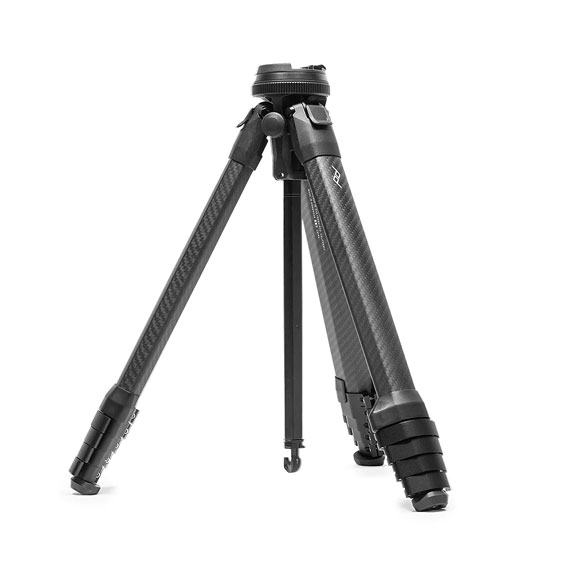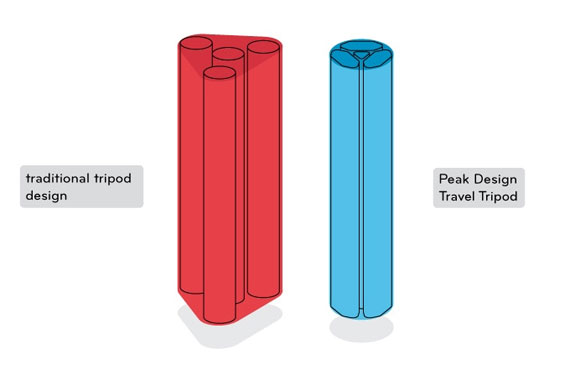The realm of photography gear witnessed a paradigm shift when Peak Design decided to toss the conventional design blueprint for travel tripods out the window. The narrative of travel tripods has always been scripted around cylindrical tubes – they are strong, stable, lightweight, and economically viable to produce. However, their inherent design didn’t allow for compactness, which is a quintessential feature for the wanderlust-infused photographer. Peak Design embarked on a mission to rewrite the conventional by replacing cylindrical tubes with a more space-efficient design. Here’s a dive into their journey of innovation and the results it bore.
The Conundrum of Circular Tubes:
The architecture of traditional travel tripods hinged on a central tubular column encircled by three telescoping tubular legs. This design, although robust and cost-effective, failed to address the demand for compactness due to the unavoidable dead space between the circular tubes. The quest for a compact design steered Peak Design away from the circular narrative to explore shapes that nestle seamlessly with each other, eliminating the voids in between.
Getting Into Shape:
Transitioning from the conventional round tubes to non-round ones was anything but a walk in the park. The process of creating aluminum tripod legs via extrusion, analogous to a pasta maker squeezing out the desired shape, was relatively straightforward. However, the real challenge surfaced with additional processes like cutting, machining, and finishing, which were more time-consuming due to the unconventional shape.
Carbon tripod legs posed a different set of challenges. Unlike the automated processes of pultrusion or roll-and-cure used for round tubes, the unique geometry of Peak Design’s tripod legs necessitated a manual construction procedure. Ensuring a precise carbon fiber wrapping with 8-12 layers and creating a custom-built machine for tight wrapping marked a laborious venture into uncharted waters.
The Payoff – A Compact Marvel:
The herculean effort bore fruit as the resultant non-round tubes significantly reduced the tripod’s spatial footprint without compromising on strength. This innovative design facilitated a snug nesting of the tripod legs, making the Travel Tripod a compact marvel.
The Redesign Journey Didn’t Stop at Legs:
Peak Design’s vision of compactness transcended beyond the legs. They reinvented the hub, the metal connector for the legs and the center column, to nestle between them, reducing its diameter from the conventional 4 inches to 2.5 inches. This metamorphosis, although demanding in terms of machining, contributed to the tripod’s compact narrative.
The Compact Ball Head was another feat of engineering, replacing the cumbersome adjustment knobs with a low-profile ring. This change, while enhancing the aesthetic and user experience, called for a more intricate internal mechanism, showcasing Peak Design’s commitment to balancing functionality with compactness.
Conclusion:
Peak Design’s journey of breaking away from the traditional cylindrical tube design to a more compact, space-efficient design underscores a bold step towards evolving photography gear. By embracing the complex manufacturing journey, they have not only set a new standard in tripod design but also demonstrated a remarkable blend of innovation, functionality, and compactness, redefining what modern-day travel tripods can aspire to be.
Currently limited stock: Peak Design Travel Tripod
Like This Article?
Don't Miss The Next One!
Join over 100,000 photographers of all experience levels who receive our free photography tips and articles to stay current:








Leave a Reply